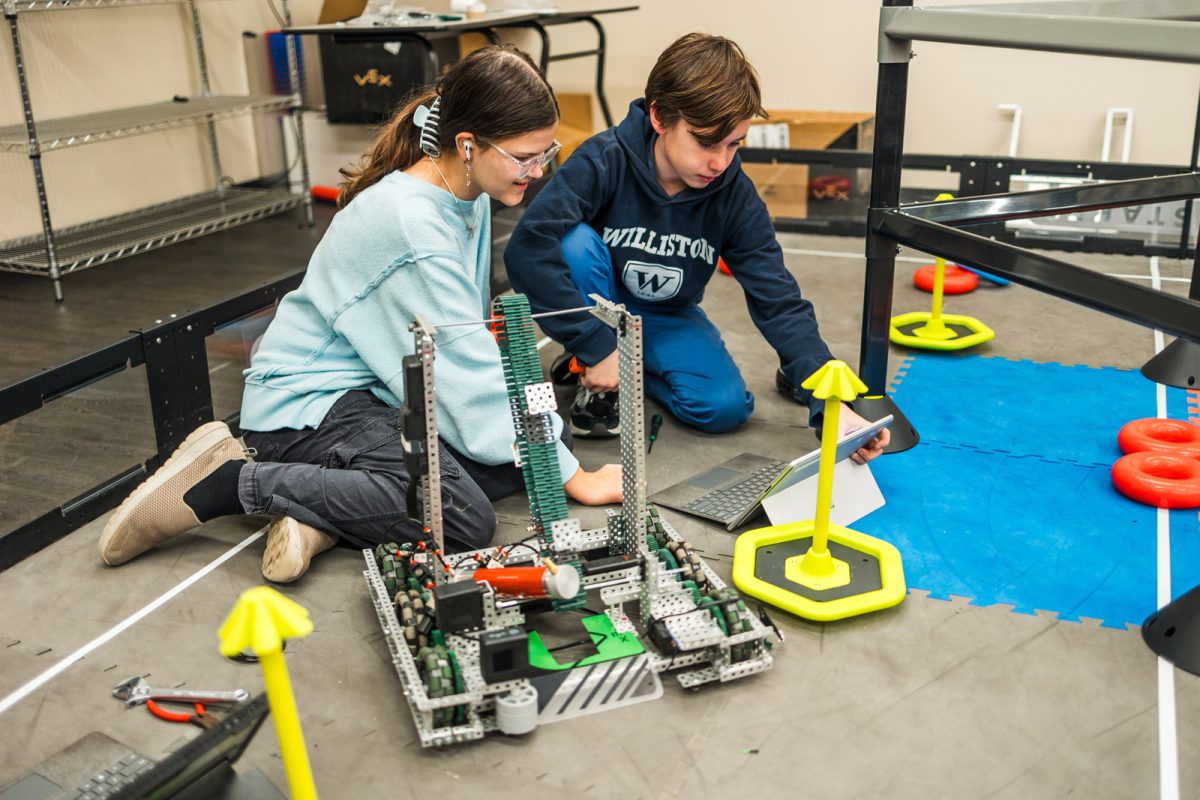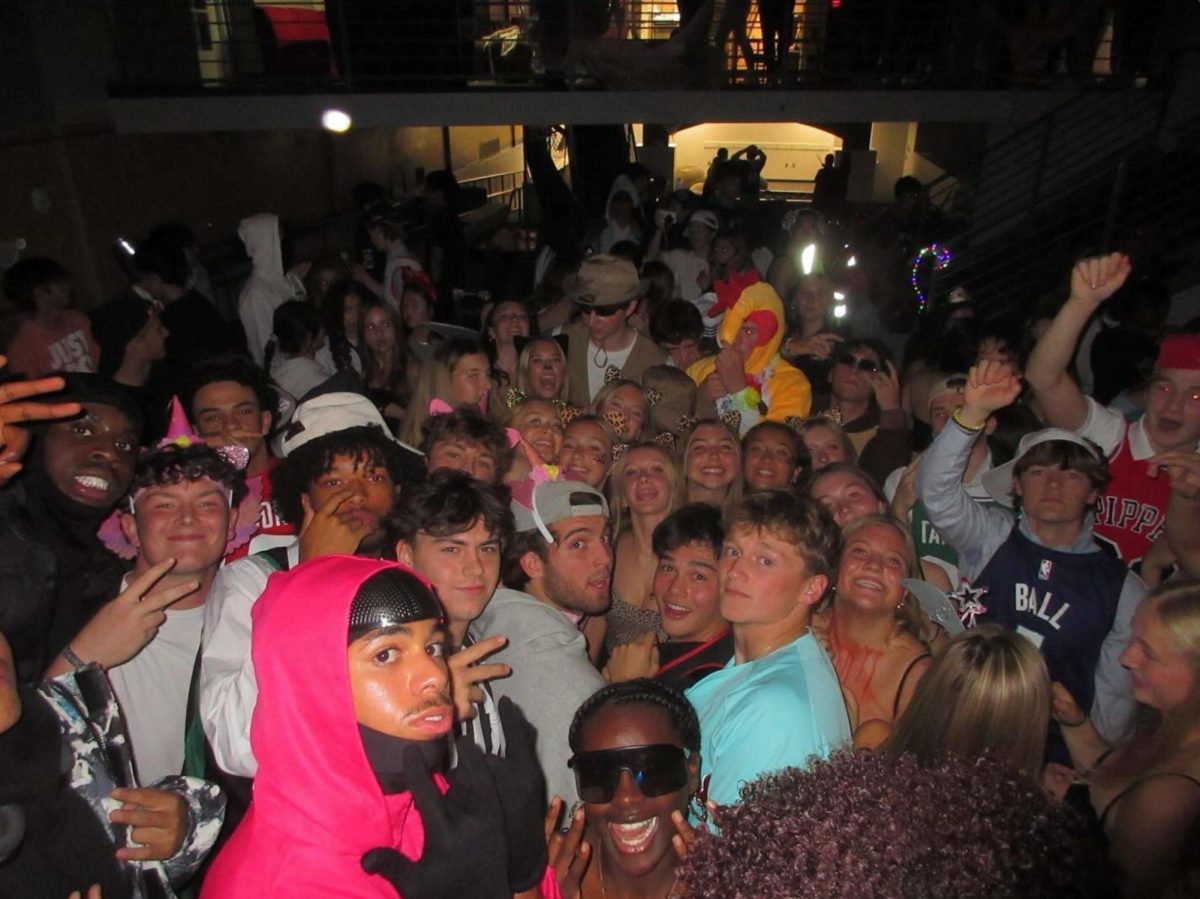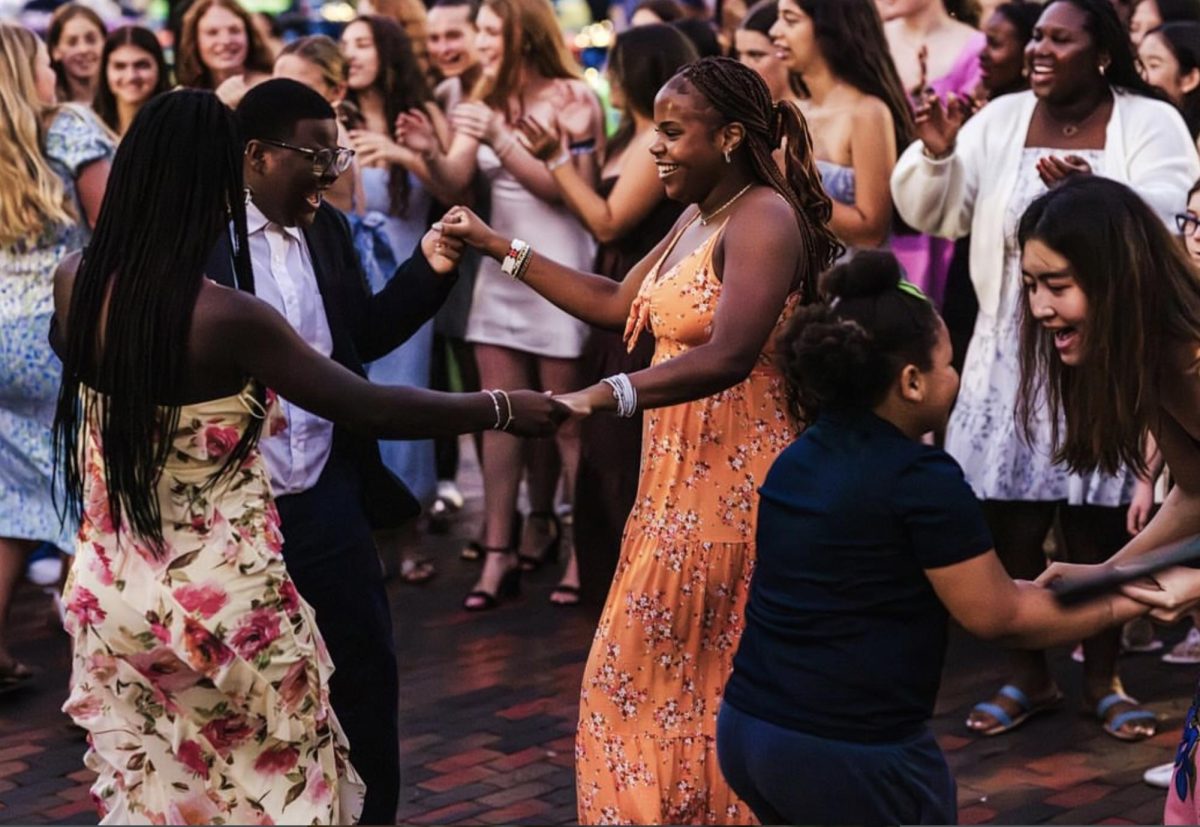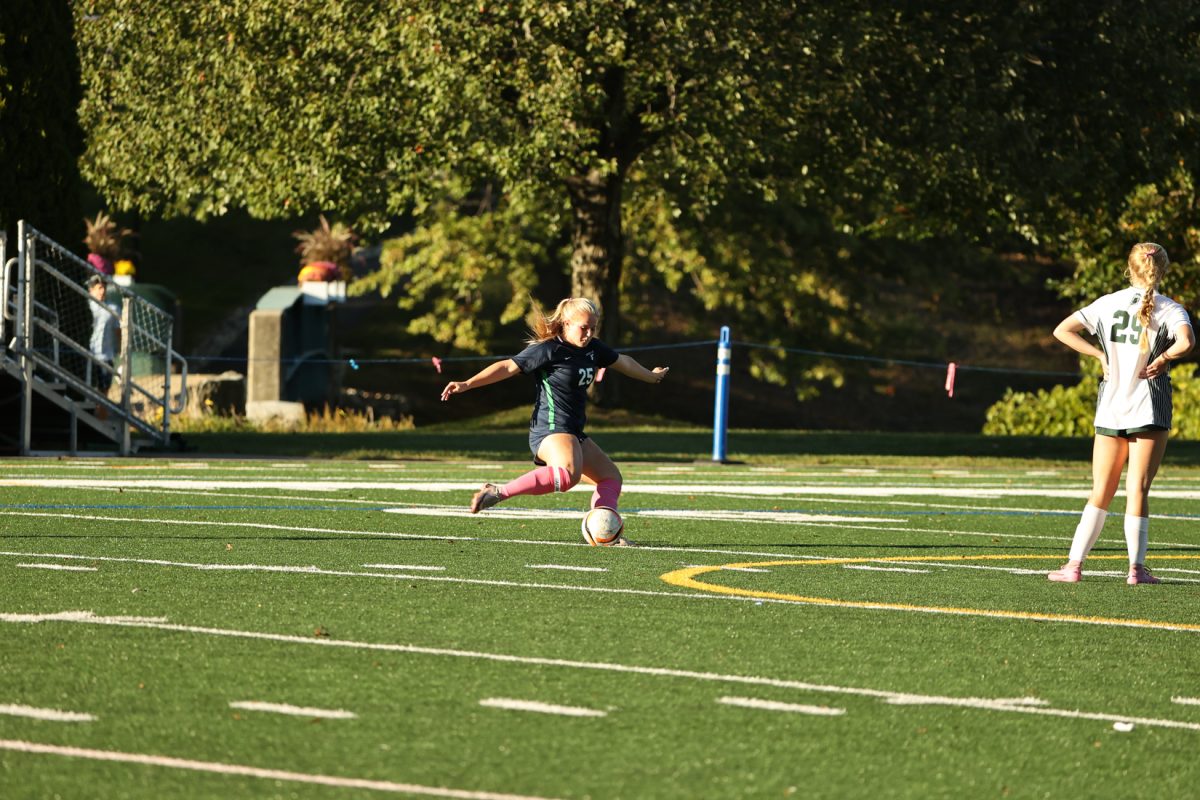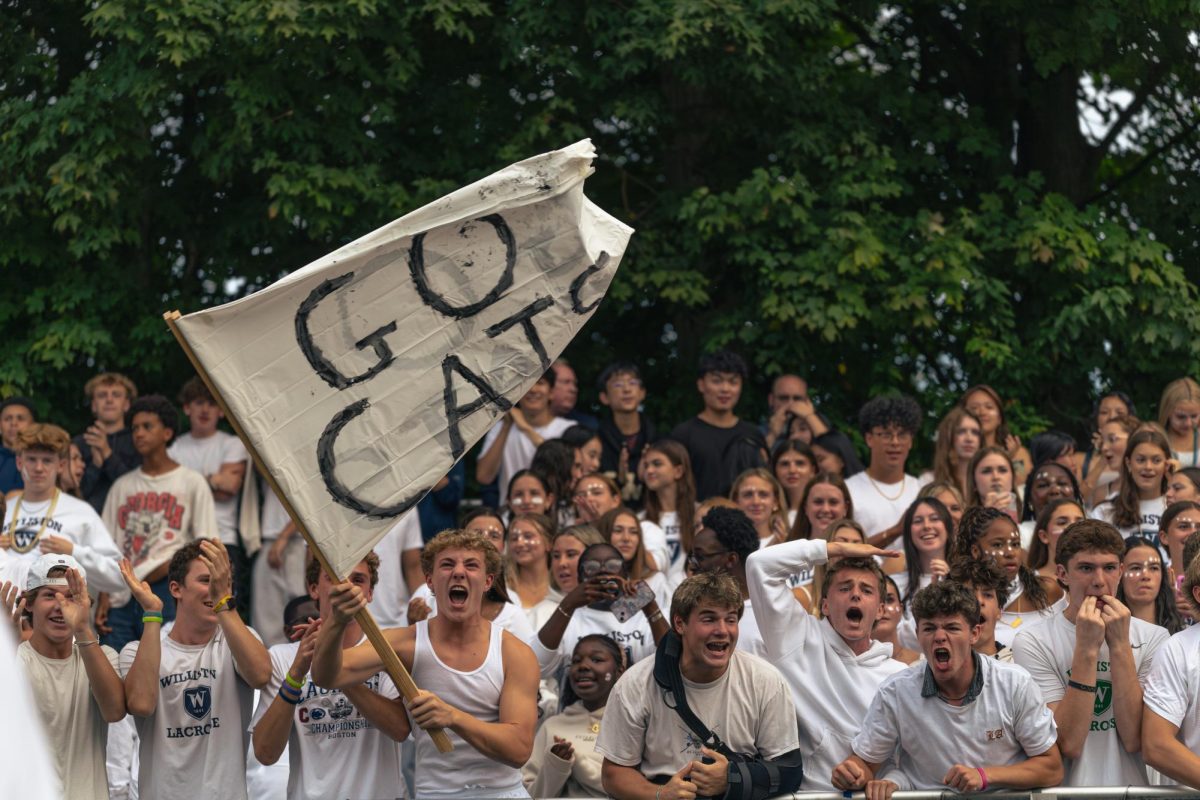Here is a list, in no way complete, of items in the Robotics lab: drills and drill bits, hammers, headphones, a saw, batteries of assorted sizes, rubber bands, screwdrivers, PlayStation controllers, pens, a soldering iron, linear gears, too many power strips and power cords and power cables to accurately count, hundreds of circular plastic parts, and dozens of yellow bins on shelves, one of which contained a 6-tooth sprocket, and another with a single piece, something called a 60-degree gusset.
The lab, in the lower level of the Clapp Memorial Library, is also home to the school’s main robotics playing field, a roughly 24-foot square of interlocking rubber mats on which sits a series of horizontal plastic cylinders. It’s into these tubes that, in an official robotics competition, the robot must place as many balls as possible. The team whose remote-controlled robot picks up and places the most balls wins.
One could spend a long time trying to compare robotics to another sport, something more conventional like soccer. Both feature a field, a ball, and teammates. That’s about where the similarities end. And yet, like any other sport, there’s a camaraderie—a need to work together—that fuels Williston’s robotics team. More than any other sport, however, there’s a sense that failure is not just a steppingstone toward success. In fact, it’s almost integral to the sport itself.
“There’s no blueprint,” explained senior Maddie Helgeson, as she and sophomore C. Arthur Shangraw strung a series of rubber bands around a bunch of connected metal pieces set crosswise on longer horizontal metal bars. The whole thing resembled a tank, but without a roof. Or sides.
They were attempting to connect the rubber bands to a motor, which would then spin several other pieces of metal and cause the machine to, once it has picked up a ball, move it in such a way as to make it easier to deposit balls into one of the plastic cylinders on the playing field. “We have to figure out how to do it ourselves,” Helgeson added, and “become more comfortable” failing on the first try.
“We’re constantly running into issues, and taking things apart and rebuilding them,” Helgeson explained. She said even when “building something five times,” she and her teammates have become “a lot more familiar with dealing with problems.”
Hegelson is, no surprise, planning to pursue a degree in mechanical engineering next year in college.
Meanwhile, Shangraw took something called a “c channel,” a small steel piece shaped like its titular letter, and began sawing it. The sound was piercing. Nobody seemed to notice; they were all bent over their respective tables, tinkering, trying, taking things apart, putting them back together.
Austin Gou, a ninth grader, worked with Henry Fei, a sophomore. Gou said they were attempting to modify a piece to use on the intake valve of their contribution to what would eventually become the team’s competition robot.
At another table, Rayray Cao, a tenth grader, worked alongside junior Leo Li. Cao fiddled with a pneumatic tube he and Li were using in an attempt to make a hinge to better pick up the balls. Li grabbed a soldering iron, put it to a piece of metal, then put it down again.
“It’s extremely difficult,” Li said, laughing. “We haven’t succeeded once, but we get through it.”
This resilience is all part of the process, explained Nathan Wolthuis, who, along with his science department colleague Jane Lucia, coaches this trimester’s Robotics crew. So is the teamwork, said Jessi Johnson, who takes over as Robotics coach in the Winter. Johnson explained that during robotics competitions, there is a round in which students have an assigned “ally” team, with whom they work together and compete against robots from two other schools.
Wolthuis, who has taught physics for two years, is new to the robotics program this year. He pointed out various improvements each table has made in the past few seven. “These projects have come a long way.”
Shangraw hopes their robot will be fully assembled by the end of the week. Although they aren’t registered to officially compete, the Robotics team will take a trip to Hall High School in West Hartford, Conn., on Oct. 25, where they’ll observe a qualifying round put on by Vex Robotics, an organization that sponsors competitions and robotics programs nationwide.



